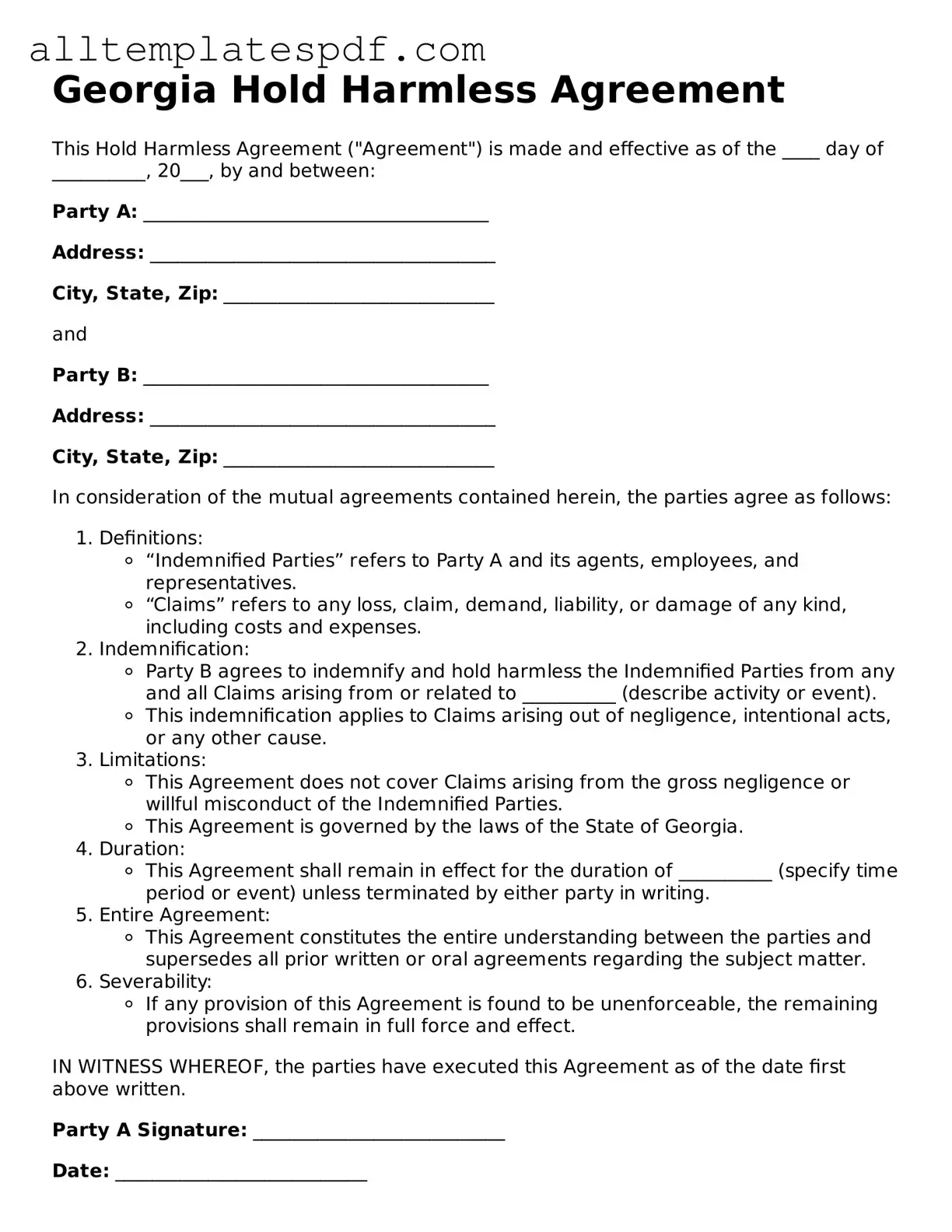Instructions on Utilizing Georgia Hold Harmless Agreement
Once you have the Georgia Hold Harmless Agreement form in front of you, it's time to fill it out accurately. Completing this form requires attention to detail, as each section needs to be filled in correctly to ensure its validity. Follow these steps to ensure you complete the form properly.
- Begin by entering the date at the top of the form. This should reflect the date you are completing the agreement.
- Next, provide your full name in the designated space. Make sure to include any middle initials if applicable.
- In the following section, write your address. Include your street address, city, state, and zip code.
- Indicate the name of the party or organization you are entering into the agreement with. This could be an individual or a business entity.
- Fill in the address of the other party or organization, similar to how you entered your own address.
- Next, describe the specific activity or event that is the subject of the agreement. Be clear and concise.
- In the section that follows, read the terms carefully. You may need to initial or sign to acknowledge your understanding and acceptance of these terms.
- Finally, sign and date the form at the bottom to finalize the agreement. Ensure your signature matches the name you provided earlier.
After completing these steps, review the form for accuracy. Make copies for your records and provide a copy to the other party involved. This will ensure that both sides have a clear understanding of the agreement.
